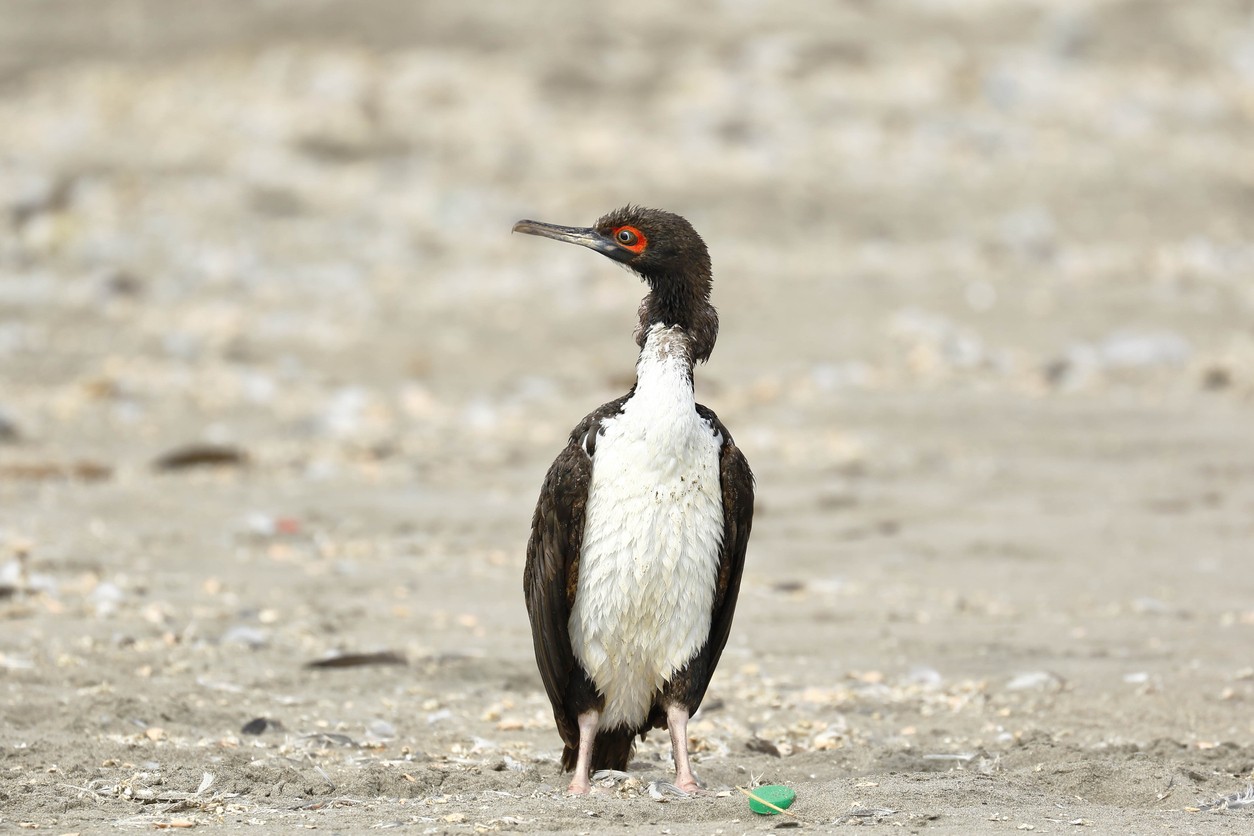Guanay Cormorant
A species of Cormorant, Also known as Guanay Scientific name : Leucocarbo bougainvillii Genus : Cormorant
Guanay Cormorant, A species of Cormorant
Also known as:
Guanay
Botanical name: Leucocarbo bougainvillii
Genus: Cormorant
Content
Description General Info

Description
The Guanay cormorant or Guanay shag (Leucocarbo bougainvilliorum) is a member of the cormorant family found on the Pacific coast of Peru and northern Chile. (The Argentinian population on the Patagonian Atlantic coast appears to be extirpated.) After breeding it spreads south to southern parts of Chile and north to Ecuador, and has also been recorded as far north as Panama and Colombia – probably a result of mass dispersal due to food shortage in El Niño years. Its major habitats include shallow seawater and rocky shores. The Guanay cormorant is similar in coloration to the rock cormorant, Phalacrocorax magellanicus, but larger, measuring 78 cm from the tip of the bill to the end of the tail. Its bill is grayish with some red at the base. The face is red with a green eye-ring. It has roseate feet. The head, neck and back are black as are the outer parts of the thighs. The throat patch, breast and belly are white. In breeding plumage it has a few white feathers on the sides of the head and neck. Breeding occurs year-round with a peak in November and December. The nest is built of guano on flat surfaces on offshore islands or remote headlands. There are up to three nests per square meter in high-density colonies. The Guanay cormorant lays two or three eggs of approximately 63 x 40 mm in size. It feeds mainly on the Peruvian anchoveta, Engraulis ringens, and the Peruvian silverside, Odontesthes regia, which thrive in the cold Humboldt Current. The Guanay cormorant is the main producer of guano. Habitat loss and degradation and over-fishing have resulted in a steady decline of the population of about 30% from an estimated figure of 3 million birds in 1984. This species is listed as Near Threatened by IUCN. Some taxonomic authorities, including the International Ornithologists' Union, place this species in the genus Leucocarbo. Others place it in the genus Phalacrocorax. The scientific name commemorates the French explorer Louis Antoine de Bougainville. The bird's droppings were such an important source of fertilizer to the peoples of the Andes that it was protected by Inca rulers, who supposedly made disturbing the cormorants in any way punishable by death. 
Size
76 cm
Nest Placement
Cliff
Feeding Habits
Guanay Cormorant primarily feeds on Peruvian anchoveta and Peruvian silversides, showcasing a specialized diet. This bird employs diving tactics to hunt underwater, exploiting the abundant anchovy populations along the coast. Its dietary adaptations underline a unique foraging niche among seabirds.
Habitat
The guanay Cormorant predominantly inhabits marine environments, thriving along shallow seawaters and rocky shorelines. This species typically breeds on isolated offshore islands and secluded coastal headlands, maintaining a close proximity to the colony when foraging for fish, usually within a range of 1-3 km. Occasionally, guanay Cormorant may extend their foraging trips up to 4-6 km from their nesting sites to satisfy their dietary needs.
Dite type
Piscivorous
General Info
Feeding Habits
Bird food type


Scientific Classification
Phylum
Chordates Class
Birds Order
Gannets and Relatives Family
Cormorants Genus
Cormorant Species
Guanay Cormorant